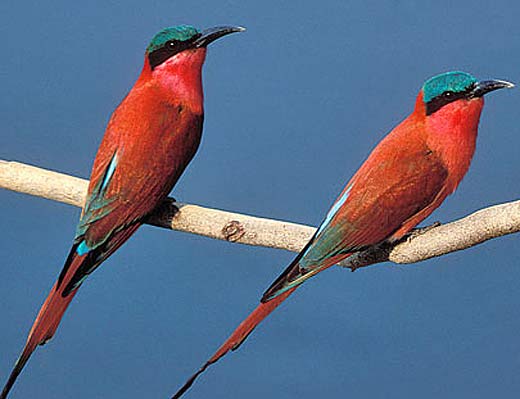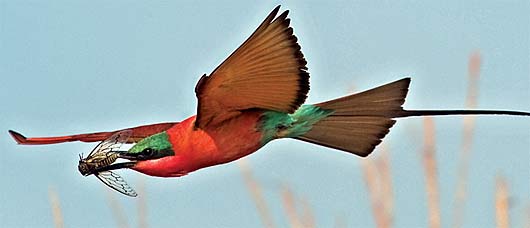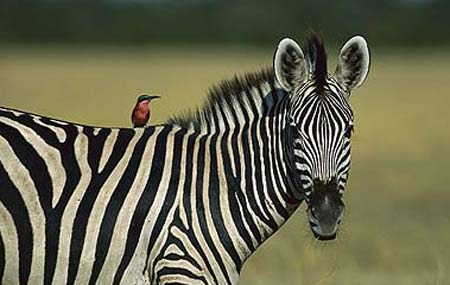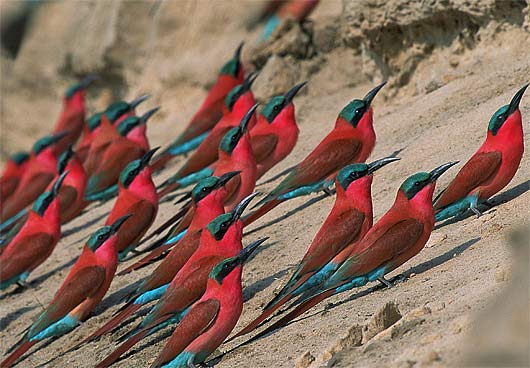Northern Carmine Bee-eater – Hitches Rides, Snags Bugs

The Northern carmine bee-eater has bright red feathers and gathers in large colonies of hundreds or thousands of individuals. It makes quite a dazzling spectacle. In quite a few of their regional homes in Africa where the birds are known to nest in large numbers year after year, they are a major tourist attractions. There are a number of bee-eaters in the world, almost all of which are brightly colored. They are known for their skills snatching insects out of the sky. Bee-eaters do of course eat bees, along with a host of other small creatures with wings. The Northern carmine bee-eater is unusual in that it enjoys hunting for locusts and grasshoppers more than any other insects.

The birds have a slightly complicated migration route as they spend some months of the year in three different places as they go to where the hunting for their favorite insects is best. These birds do not mess around when it comes to hunting. That is why they have a fairly healthy population count. Of course, the insects will do their best to avoid being eaten, performing various dodging maneuvers. But the bee-eater in pursuit won’t simply loop around aimlessly in the air, instead it targets each particular insect, following the movements it makes and hunting it down by following its twists and turns. Despite its slight appearance, the bill is quite strong and chomps down on prey insects’ hard shells with a loud snap at times.

When the prey insect is of a larger size the birds may beat them on their perch before eating. This also helps disarm any insects with stingers. The bee-eaters often set off on short hunting trips and then return to perch for a moment. As for perches, these birds have a highly unusual habit of using living, moving animals as temporary perches. This can be any of a large number of the local animals, such as zebras, warthogs and giraffes, and even a number of birds, including kori bustards, ostriches and several species of stork. When they do this not only does it provide them with an elevated lookout, but the passing animals stir up insects for the birds to go after as they move along.

Breeding season is at the start of the rainy season, in May or June. The colonies choose sandy cliffs by riverbanks for their nesting where they dig burrows in the soft soil. With so many birds competing for exclusive riverfront burrows there can be dizzying arrays of burrows in the cliffs and even 60 entrances per square meter (10 square feet) of cliff has been seen.

